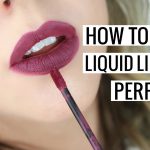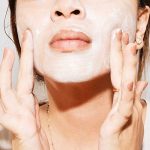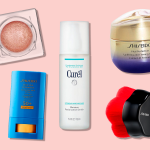It’s incredibly tempting to pop a pimple when you catch sight of it under the surface of your skin. After all, waiting for a pimple to heal on its own takes days when squeezing a pimple would seem to resolve the discomfort in seconds.
As much as you might want to, it’s really best not to pop a pimple. When you do, you’re interfering with your skin’s natural healing mechanism. You’re putting yourself at a higher risk for scarring and infection, which is worse than a temporarily visible skin blemish. Any doctor or dermatologist will tell you that popping a pimple is a last resort, something that you should avoid whenever possible.
Certain types of pimples and pustules should never be popped yourself, no matter what. If you have a whitehead or blackhead that you feel you’ve got to get rid of quickly, we will go over a few tips to minimize the risks involved.
Contents
How To Pop A Pimple At Home
The safest way to get rid of a pimple is to wait it out. Pimples surround bacteria that’s become trapped in the layers of your skin. Popping a pimple releases that bacteria onto your face. Your skin knows how to heal a pimple better than you do.
If you’re going to pop your pimple, follow some guidelines that will be safer for your skin.
How to extract a whitehead
These instructions apply to large whitehead pimples — meaning you can see white pus inside of a trapped pore. You might want to try an over-the-counter medication that contains benzoyl peroxide or salicylic acid before you try to pop a whitehead, as those ingredients decrease inflammation and might make the process easier.
Steps
- Start by washing your hands thoroughly, so you don’t cross-infect your pimple with bacteria on your hands.
- Sterilize a sewing needle with rubbing alcohol. Carefully insert the pin at an angle into the widest part of your pimple. You shouldn’t feel any pain or draw blood when you do this.
- Using a cotton ball or gauze strip, drain your pimple. Instead of trying to push the bacteria and pus out of it, hold your skin taut so that the other layers of skin drain the pimple for you. This can keep you from pushing bacteria back down into your skin.
- Sterilize the area of your pimple using an antimicrobial drying agent, like witch hazel.
How to extract a blackhead
When the pus and bacteria inside of a blackhead are exposed to the air, they turn black and create pustules called blackheads. Since the pore is already open, a blackhead may be easier to extract than a whitehead.
Steps
- Start by applying a product with salicylic acid or benzoyl peroxide to the site of your blackhead. This can loosen any trapped dirt or pus that you’re about to remove.
- Wash your hands thoroughly with soap and warm water.
- Using cotton swabs, gently apply pressure on both sides of the blackhead. Be mindful not to press down on the blackhead itself. The clog in your pore should pop out easily. If it doesn’t, don’t keep applying pressure.
- Use an astringent like witch hazel or rubbing alcohol to sterilize the area of the blackhead and prevent more from developing.
Solutions Without Popping
Professional Extraction
The best thing you can do is have a dermatologist or an esthetician drain the pimple or blackhead. The pros know how to carefully extract those blemishes without causing damage to the skin.
Extractions work especially well for blackheads.4 Your therapist can get rid of most of the existing blackheads on your skin in just a few visits.
Of course, it’s not practical nor realistic (not to mention cost-effective) to run to the dermatologist’s office or salon every time a blemish appears.
Apply a Warm Compress
If you have a pustule with a large, obvious white head, you can try to get it to drain with a warm compress. Soak a soft cloth in warm water and hold it over the pimple for several minutes. Rewarm the compress when it gets cold.
The warmth helps to loosen and “open” the pore and soften the head, allowing the pimple to drain naturally. Make sure, though, that the pustule is ready, with a large white head at the very surface of the skin. If you do this with a pimple before the white head has formed it can make the blemish more inflamed, making it look larger and more obvious.
This method won’t work on blackheads. The core of a blackhead is much harder and stickier than the core of a pustule.
Spot Treatment
If you have a day or so to wait, over-the-counter spot treatments are another good option. Dab a small amount on the pimple and leave it alone. The spot treatment helps dry up the pimple.
You can get spot treatments in the skincare aisle of your local drug store. Products that contain benzoyl peroxide or sulfur tend to work best on pustules.
Some people also have good results with products containing salicylic acid or tea tree oil. You may want to experiment with a few different brands to find the one that works best for your skin.






